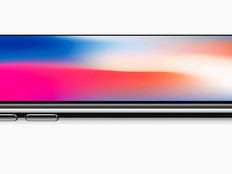What Makes a Smartphone so Smart?

The term mobile workforce used to apply only to high-technology firms or high-powered executives. Today, companies in every industry are exploring the benefits of putting data right in the palm of every employee’s hand.
World Wide Lines of Covington, Tenn., is one of those companies. The supplier of promotional products wants to keep a handful of its sales reps productive without weighing them down with a notebook PC.
“We have several sales representatives, and I want to keep them connected better because they live and die by e-mail,” says Information Technolgy Manager David Keith. The sales staff can access e-mail remotely from the Web, but it slows things down if they have to fire up a notebook PC every time they want to check e-mail.
That’s where smartphones come in. “We are most interested in smartphones because of the tethering capability, and if I can connect the smartphone to a notebook for Internet connectivity, that’s an extra bonus,” he says.
Here are three mobile devices that can help you keep road warriors on the road and current on their e-mail and calendars wherever they’re located.

Research in Motion’s BlackBerry 8800 Series
Like previous BlackBerrys, the 8800 features e-mail push, meaning your device is prompted when you receive a new e-mail. Unlike the many Windows Mobile 5.0 devices out there, which sync only with Microsoft Exchange 2003, BlackBerrys can get the e-mail push from IBM Lotus Domino, Novell Groupwise or Exchange.
The BlackBerry 8000 series and the BlackBerry Pearl offer a lighted trackball navigation system, which eliminates the need for touch-screen navigation — and it’s big enough for people with larger thumbs like me.
Road warriors will love the integrated Global Positioning System feature, which requires a location-based service that costs about $10 per month, and provides voice directions and color maps to your destinations. The Cingular version of this device also includes the carrier’s Push-to-Talk feature, which allows you to see an individual’s availability before you attempt to call them.
The 8800 comes equipped with Bluetooth 2.0 for earpieces and headsets. There is no Advanced Audio Distribution Profile (A2DP) support for stereo headphones, but most mobile professionals don’t need their MP3 players built in. The BlackBerry also serves as a modem.
Why the BlackBerry 8800 Works for IT
Combined with the standard BlackBerry Enterprise Server (BES), there are more than 100 data-security settings, including locking down lost phones, conducting data wipes or locking out Bluetooth. There is support for Personal Identification Number-to-PIN and Short Message Service message auditing, encrypted e-mail and a smart-card reader.
Another advantage of the BlackBerry system for the IT department is the ability to deploy network and systems management tools, such as server monitoring, workflow management and remote IT administration via BES. Finally, if you want to deploy instant messaging but need to record and limit IM for e-mail management and Sarbanes-Oxley compliance, you can combine the BlackBerry system with a product such as Microsoft Office Live Communications Server 2005.
Disadvantages
Many of the security features mentioned above require an organizationwide commitment to BlackBerry devices. Because of cost, it’s hard to justify that commitment for a few users. It also becomes a second point of failure in a Windows environment. Microsoft Windows Mobile 5.0 devices sync directly with Microsoft Exchange, whereas BlackBerrys sync with the BES that gets its data from Exchange. So, if the BES goes down for any reason, Windows devices could still gete-mail, but BlackBerrys would be dead in the water.
Heavy Web browser users may be disappointed that there is no 3G or Wi-Fi support. Although RIM has hinted at Wi-Fi support for some time, it’s not there yet in the 8800. This means Web browsing is a little sluggish on occasion. Personally, I don’t find surfing the Web on my mobile device to be a primary motivator, except to check the occasional Red Wings score while I’m on the road. If these features are important to you, it’s rumored that the 8820, due to be released during the second or third quarter of 2007, will include them.

T-Mobile Dash
Although a mere half-inch thick, the T-Mobile Dash offers an easy-to-read 320-by-420-pixel screen. The Dash features a silicon or soft rubber coating, which feels very comfortable in the palm of your hand, and it doesn’t slip as easily. The scroll wheel on the right side of the Motorola Q is replaced with a volume touch strip.
The Dash also features the Windows Mobile 5.0 operating system. Pair it with Exchange 2003 SP2 to access security features, Direct Push (e-mail on demand) and your company’s global address list. All of these are fairly easy to set up and require no software installations.
This phone also has a suite of Office-like applications, called ClearVue, which allows you to read Word, Excel, PowerPoint and Adobe Portable Document Format (PDF) files. Although conversions of downloaded attachments aren’t perfect, they are passable. Unless you want to edit a doctoral dissertation on a 4-inch-wide device, you’re unlikely to have any serious problems.
Navigation is also pretty easy. The menus are so intuitive and the navigation keys make a lot of sense, and my Dash’s screen stays pretty fingerprint-free.
Why the Dash Works for IT
Because the Dash uses Windows Mobile 5.0, when combined with Exchange 2003 SP2 or above, you get many security and data communications features. Loss protection is ensured by extending an optional password unlock policy to the devices, which requires users to enter a code to use the operating system (but not necessarily to answer calls). Remote wipe is also possible. Direct Push and global address book access are also features of the Exchange 2003 SP2 system configuration for Windows Mobile 5.0.
Although this sounds silly, the aforementioned soft rubber casing of these devices will lead to fewer accidental damage reports. Sure, many users do have external cases; but if they’re like me, they tend to just throw the device into their pockets and go.
Wi-Fi connectivity is included (and it’s a cool and advanced Wi-Fi). At our offices, we use Wi-Fi Protected Access (WPA), Protected Extensible Authenticaion Protocol (PEAP) and Remote Authentication Dial-In User Service (RADIUS) with certificates, and the Dash handles all of that. You can also conserve battery life with the Dash’s auto-power-down feature.
This phone competes more with the Motorola Q than, say, the Palm Treo 700w. It’s a must for executives who can’t live without e-mail but don’t want to be weighed down by a bulkier device.
Disadvantages
As with the rest of the Windows Mobile 5.0 smartphone line, it’s a waste without an Exchange 2003 SP2 (or 2007) server behind it. The good news is most organizations have adopted the Microsoft Exchange platform.
Although ClearVue applications let you get the general gist of your Office 2003/2007 attachments, even minor edits were a challenge. That might be disappointing when you’ve got just enough time to mess with the phone but not enough time to pull out the notebook PC.
In my travels throughout the country, I have had the most difficulty with getting reception on the T-Mobile network. But perhaps arguing about that is like arguing about operating systems or religion — it all depends on your point of view. I found the Dash enticing enough to want to switch from Verizon to T-Mobile despite my reception problems and any the misgivings I had about the network.

Motorola Q
The Motorola Q features a thin, half-inch thick design — even thinner than the Razr — yet its 320-by-420-pixel screen makes it easy to read e-mails on the go. Actually, I found it easier to use than the Palm Treo 700w for both of these reasons.
The Windows Mobile 5.0 operating system means that Direct Push from your company’s Exchange 2003 SP2 server is incredibly simple to set up with the server’s external name and account information. And I never had to connect it to a computer first.
Why the Motorola Q Works for IT
Like many Microsoft-based products of its kind, the Motorola Q integrates itself well into your Exchange 2003 SP2 server, without having to install software on users’ desktops. The Q communicates directly with Exchange over HTTPS, just as if it was another client (such as Outlook’s Remote Procedure Call over secure Hypertext Transfer Protocol feature). It also provides direct access to your organization’s global address list, so it’s easy to look up names and e-mail addresses.
Of course, all that access should raise your security eyebrow. If a phone is lost or stolen, you can initiate a remote wipe with one of Microsoft’s free tools. You can also enforce a numerical password, which isn’t required to answer calls, just to access the phone’s operating system from Exchange.
The Q serves casual phone users who would like to be notified when they receive e-mail, but don’t care much about being able to edit spreadsheets on their smartphone, because it does not include Mobile Office applications. So, for the IT manager on a budget (and who isn’t?), this phone may serve as a fine alternative to higher-priced devices.
Disadvantages
I’ve mentioned Exchange 2003 SP2 twice in this review; without it, many features are lost. To use the security features and Direct Push so coveted by most users and administrators, you need to have this installed (Exchange 2007 works too, of course). By now, most organizations interested in personal productivity have taken this step, as SP2 has been out for more than a year.
The Motorola Q also has a scroll wheel built into its right-hand side, a unique feature among the smartphones out there today. At first, I thought it was pretty helpful; but as I used the phone, I found I often hit it inadvertently. That got to be so annoying that I looked for a way to turn it off and couldn’t find one.
Finally, the Q has no Wi-Fi capabilities. This may not be a big deal, but I can imagine situations where it would be nice to have a little Wi-Fi capability. Of course, for administrators who cringe at the very mention of Wi-Fi systems, perhaps this is a security feature they might welcome.








